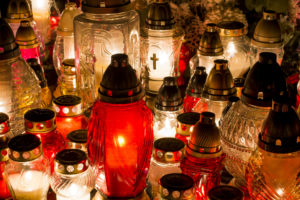
Halloween tends to get a lot of attention when it comes to celebrations in late October and early November. Still, it is far from the only celebration taking place around this time. For many, the day after Halloween is a date with a bit more spiritual significance. Known to Christians as All Saints’ Day, this is a holiday with a long history and a very powerful connection between the world of the living and the realm of the spirits.
Though there are many interpretations of this holiday, many Christians around the world use the date as a way of honoring God and all the men and women deemed worthy of sainthood. Look over some of these facts about All Saints’ Day, and learn a bit more about this annual post-Halloween holiday.
Earliest Beginnings
According to the Christian faith, there is only one God. Still, men and women who have given their lives in the name of Christianity are often held in high regard. While not worshipped in the traditional sense, these martyred saints have long held a very important place in the eyes of the faithful. In the third century, it was quite common for Christians around Europe to take pilgrimages on the date of a specific saint’s death to the place where he or she was executed.
Eventually, sometime in the fourth century, the pilgrimage aspect began to fade away. Instead, leaders of various churches would set a specific day for each martyr to be shown respect within the community. After some years, this practice became complicated, as the number of martyrs kept growing. Because of this, Christian leaders decided it would be easiest for all to pay heed to these saints on the same day. Over time, the idea of honoring all of the saints who had died transformed into the celebration of All Saints’ Day.
May to November
At first, the precursor to All Saints’ Day was celebrated in May. Usually held around May 13th, this event lasted for many years until it was switched to November 1st. Many scholars dispute why this change took place, with a number of varying theories circulating about the move. Regardless of why it was switched, the new date coincided with festivals that were already being celebrated throughout Europe. Specifically, the event overlapped with the Celtic celebration of Samhain, a harvest festival that had a connection to honoring the deceased and their spirits.
Because of this link to Samhain, many people over the years have used All Saints’ Day as a way of paying heed to all the dead, not just those who were canonized as saints. By the 16th century, All Saints’ Day was an official holiday for Christians, and its observance was a requirement for all those who followed this faith. Various Christian groups have opposing views on this holiday, with some refusing to acknowledge saints because it “puts them on the same level as God.” Because of this, Protestants and other Christians use the holiday to honor all Christians.
Modern Beliefs
Nowadays, people have different ways of observing this holiday. Some churches will use this day as a way of paying respects to all members of the congregation who have died in the previous year. Masses will be held honoring the dead, and the names of all the recently deceased are often read during these ceremonies. Still others will use this day in a personal manner, visiting the graves of deceased loved ones, sprucing up the sites, and laying down fresh flowers or candles.
Though not as publicized as Halloween, All Saints’ Day is an event that has been circulating around the world for thousands of years. Whether you observe this day or not, it can be important to take a step back and consider how those who have come before have helped to make the world a better place.

